How to assemble a chicken first aid kit! Be prepared and take better care of your flock by having a fully-stocked chicken first aid kit on hand!
Chickens are like ninjas in everything they do. If you don’t believe me, you can come watch my tiny bantam Cochin rooster fly through the air and karate kick roosters twice his size with those fluffy little feet of his. Or watch Linda the Legbar ninja-eat all my potted flowers in 2-seconds flat. That’s some serious chicken ninja-ing!
Unfortunately though, chickens are also stealthy little ninjas when they don’t feel good. They can go from perfectly normal to near-death seemingly overnight! Since they are prey animals, they tend to hide signs of distress as long as they possibly can. Because of this, we chicken keepers have to act fast when an emergency or injury does arise.
Sadly, we can’t save every chicken every time, but it does help to be prepared. And since chicken vets are few and far between, treating at home is usually the only option. Assembling a chicken first aid kit is one of the best things a homesteader can do to be prepared to treat a sick or injured chicken.
Stocking a Chicken First Aid Kit:
Chicken first aid kits are relatively easy to stock and you may already have a lot of the supplies. Of all of our first aid kits, our chicken kit is actually the least stocked. Primarily because most of the supplies are already stocked in our goat first aid kit. I don’t see the point in buying items twice as long as I have the proper supplies in one of our kits. I do however still stock some of the basic supplies and all of the chicken-specific supplies in our chicken kit.
We recently switched to storing all of our first aid supplies in sturdy 5-gallon buckets. Best decision ever! It’s so easy for me to find and grab the items I need, regardless of which kit they are in!
I also use the Medical Supply Inventory List from the Homestead Management Binder to keep a list of my chicken first aid supplies. This way, I never have to wrack my brain wondering what I’m missing or what I need to restock.
Every homestead is different and every chicken keeper will want to keep different items on hand. Below is the basic list of what I like to keep in my chicken first aid kit to help my little ninjas when they are feeling less than awesome.
** I may receive a commission at no additional cost to you from purchases made through links in this article. Thank you for helping support this blog! Full Disclosure Link **
Basic First Aid Supplies for Chickens:
- Thermometers (I keep a couple on hand because they like to get lost!)
- Scissors
- Tweezers
- Disposable gloves
- Flashlight or headlight
- Notepad or pen
- Cotton swabs
- Gauze
- Vet Wrap (buy it here
)
- Towels: Very helpful to “burrito” the chicken by wrapping it tightly in the towel so it can’t flap around while you are treating it.
- Rags or hand towels: for cleaning and drying
- Triple antibiotic ointment
- Saline solution or saline wound wash: for flushing wounds and eyes
- Epsom salts: for soaking to release egg-bound hens or treat leg injuries/inflammation
- Blood-stop powder, yarrow leaf or cornstarch
- Syringes, 1 cc (buy it here
) and other various sizes
- Scalpels (buy it here
)
- Heat lamp, heat pad or other heat source: for warming a chilled chicken
Other Helpful Supplies:
- Vet Rx (Buy it here
)
- Vetricyn spray (Buy it here
)
- Liquid calcium drops (Buy it here
): may help to stimulate contractions and help pass a bound egg
- Liquid Vitamin B (Buy it here
): supplement for weak chicks & chickens or chicks with curled toes or splayed legs
- Aspirin
- Blu-Kote (Buy it here
)
- Preparation H: use for a prolapsed vent that needs to be pushed back in
- Electrolytes: Homemade or the “Sav-A-Chick” packages (Buy it here
)
- Prozap Permethrin dust (Buy it here
): to treat mites
- Diatomaceous Earth (Buy it here
): Rub into coop walls, floor, perches, etc to reduce mites in the environment then cover with shavings or straw as usual
- Duster (Buy it here
): The easiest way to apply any type of dusting treatment!
- Providone Iodine Scrub or Betadine or Chlorhexidine Scrub (Buy it here)
- 7% Iodine Solution or spray or Hydrogen Peroxide
- Green Goo, Animal Formula (Buy it here
): one of my favorites for wound and tissue care. Also use it to coat legs to treat scaly leg mites.
- Liquid Benadryl: for allergic reactions, bee stings, etc.
What do you keep in your chicken first aid kit? Share in the comments below so that we can all become better chicken keepers!
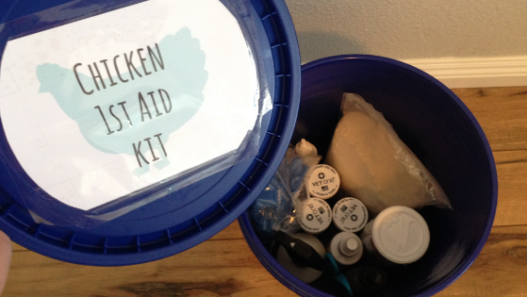
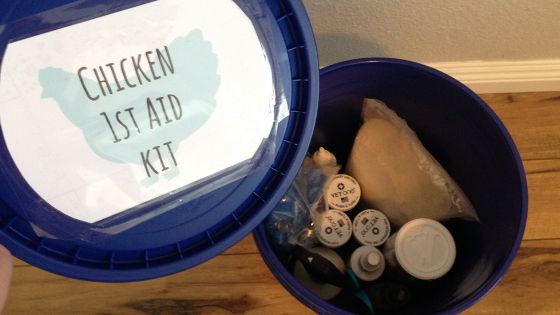


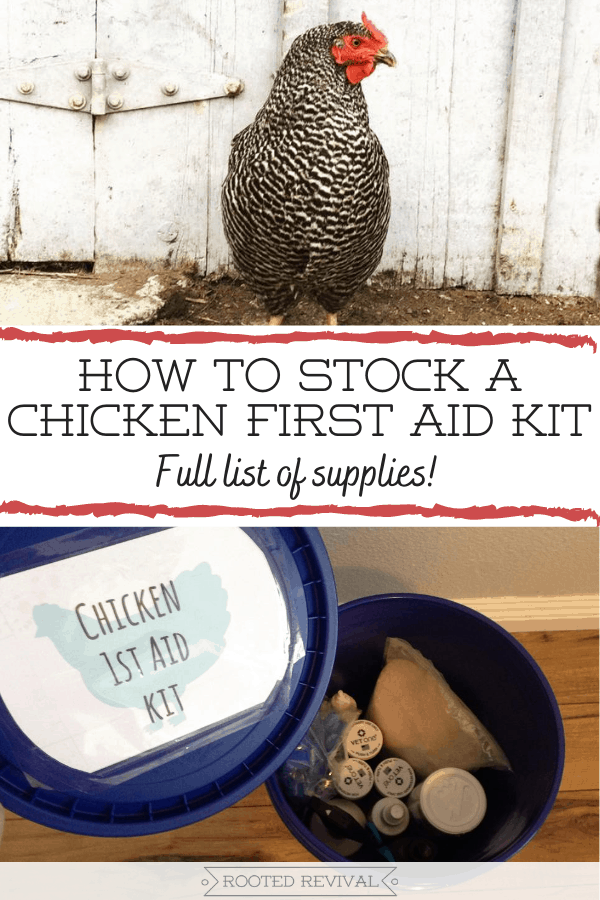



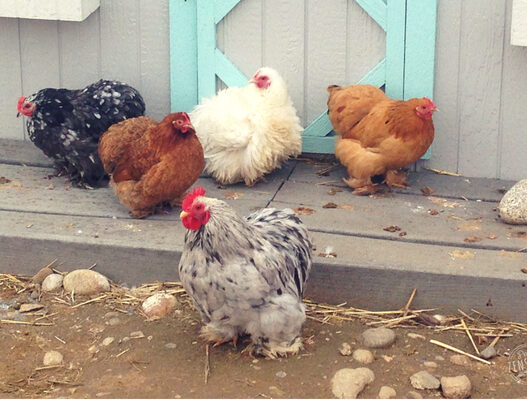

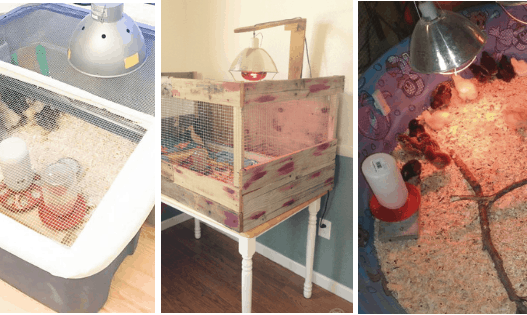

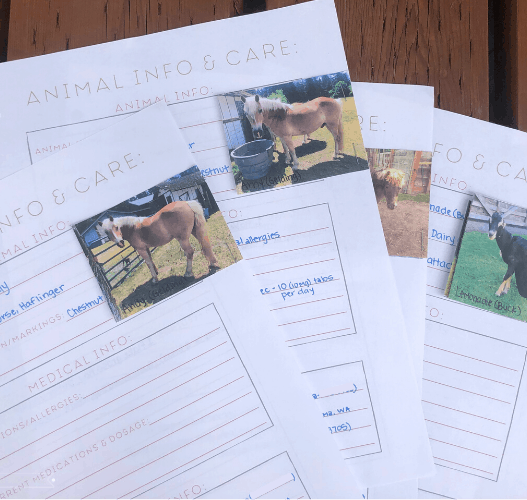


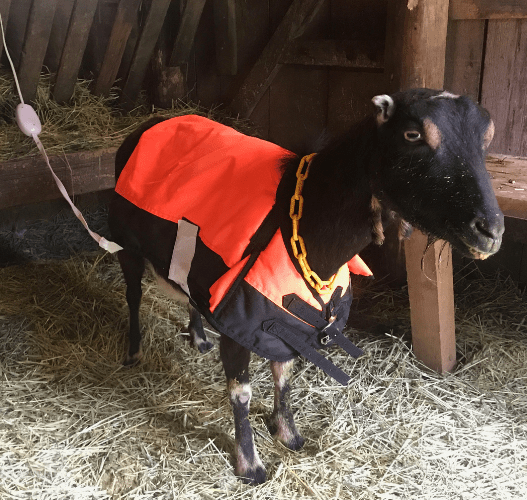
Awesome idea. My stuff is all stored in different places. I think I need to come up with something like this for my honey bees as well. Things that I do not need for regular inspections but may need if an issue arises. Thanks!
Oh what a good idea to assemble a kit for your bees! We are getting our first bees this Spring… I might need to make a kit for them now that you’ve inspired me! 🙂
Hello! This is well after the posting, but wonder what is your go-to for thermometers to use with chickens? I’m thinking this: https://www.amazon.com/dp/B074RCYR27/?coliid=ISS0X7DHASVMF&colid=PSJK03PSY0A6&psc=0&ref_=lv_ov_lig_dp_it. What do you think? Thanks!
Yes, a thermometer like that would work great! Just be aware that the probe is very long and only needs to be inserted about an inch or 2 for a chicken (depending on its size). I honestly just use the basic digital thermometers from the store. These are also the ones we always used when I worked in vet clinics. The most important thing is that it gives you a quick reading and that it has a small rounded tip. 🙂
Good to know — thank you. Probe length was my concern as well. By “basic therms from the store” do you mean something from a drugstore marketed for humans?